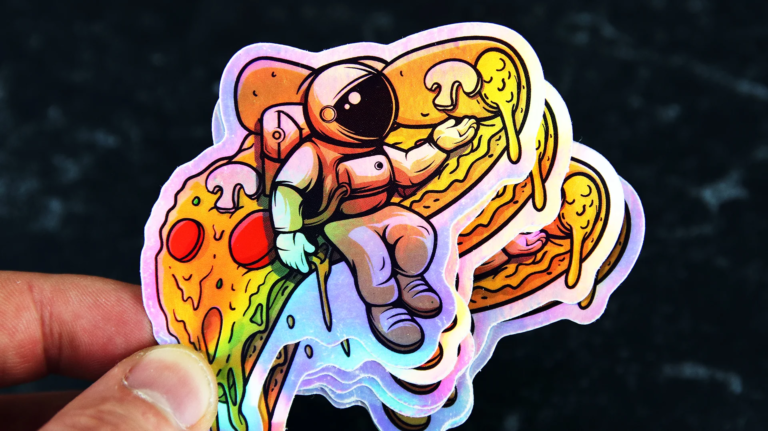In competitive marketing, brands constantly seek innovative ways to capture consumer attention and enhance engagement. Holographic stickers have emerged as a powerful tool in marketing strategies, offering eye-catching visual effects and interactive possibilities. This article delves into using holographic stickers in marketing, their benefits, successful case studies, and future trends.
Benefits of Holographic Stickers in Marketing
Visual Appeal
Holographic stickers stand out due to their shimmering, multidimensional effects. This visual appeal can significantly enhance product packaging, promotional materials, and branding efforts, making them more attractive to consumers.
Enhanced Brand Recognition
The unique visual properties of holographic stickers can help brands differentiate themselves in a crowded market. By incorporating holographic elements into logos, packaging, and promotional items, brands can create memorable and distinctive identities.
Interactive Features
Holographic stickers can incorporate interactive elements such as QR codes, augmented reality (AR) experiences, and NFC technology. These features provide consumers with engaging ways to interact with the brand, access additional information, or participate in promotions.
Applications in Marketing Strategies
Product Packaging
Holographic stickers can elevate product packaging, making it more appealing and luxurious. For example:
- Limited Edition Products: Holographic stickers can highlight limited edition or special release products, creating a sense of exclusivity and urgency.
- Gift Packaging: Using holographic elements can enhance the perceived value of gift packaging, making products more attractive for gifting occasions.
Promotional Campaigns
Holographic stickers can play a crucial role in promotional campaigns by:
- Creating Buzz: The unique appearance of holographic stickers can generate buzz and excitement around new product launches or promotional events.
- Interactive Promotions: Brands can use holographic stickers with embedded QR codes or AR experiences to create interactive promotions that engage consumers and drive participation.
Brand Merchandise
Holographic stickers can be used in brand merchandise to create visually appealing and collectible items. Examples include:
- Stickers and Decals: Branded holographic stickers and decals can be distributed as promotional giveaways, enhancing brand visibility.
- Apparel and Accessories: Holographic elements can be incorporated into branded clothing and accessories, creating stylish and eye-catching merchandise.
Case Studies: Successful Marketing Implementations
Coca-Cola’s Interactive Campaign
Coca-Cola launched a successful marketing campaign using holographic stickers with embedded QR codes. Consumers who scanned the QR codes were directed to an interactive AR experience featuring exclusive content and promotional offers. This campaign boosted brand engagement and increased sales and customer loyalty.
Nike’s Limited Edition Sneakers
Nike used holographic stickers to highlight limited-edition sneaker releases. The holographic elements added a premium and exclusive feel to the packaging, attracting sneaker enthusiasts and collectors. The campaign was a huge success, with the limited-edition sneakers selling out quickly and generating significant social media buzz.
Future Trends in Marketing with Holographic Stickers
Augmented Reality (AR) Integration
The integration of holographic stickers with AR technology is expected to become more prevalent in marketing. AR-enabled holographic stickers can provide immersive brand experiences, such as virtual try-ons, interactive tutorials, and gamified promotions. This trend will enhance consumer engagement and create memorable brand interactions.
Personalized Marketing
Holographic stickers can be used in personalized marketing strategies to create tailored experiences for individual consumers. Brands can use data-driven insights to customize holographic elements, such as personalized messages, exclusive offers, and unique designs. This customized approach can strengthen customer relationships and drive brand loyalty.
Conclusion
Holographic stickers offer a versatile and impactful tool for enhancing marketing strategies. Their visual appeal, ability to boost brand recognition, and interactive features make them valuable assets for product packaging, promotional campaigns, and brand merchandise.
As technology continues to evolve, integrating holographic stickers with AR and personalized marketing will open new possibilities for brands to engage and captivate consumers. By leveraging the unique properties of holographic stickers, brands can create compelling and memorable marketing experiences that drive visibility, engagement, and loyalty.

